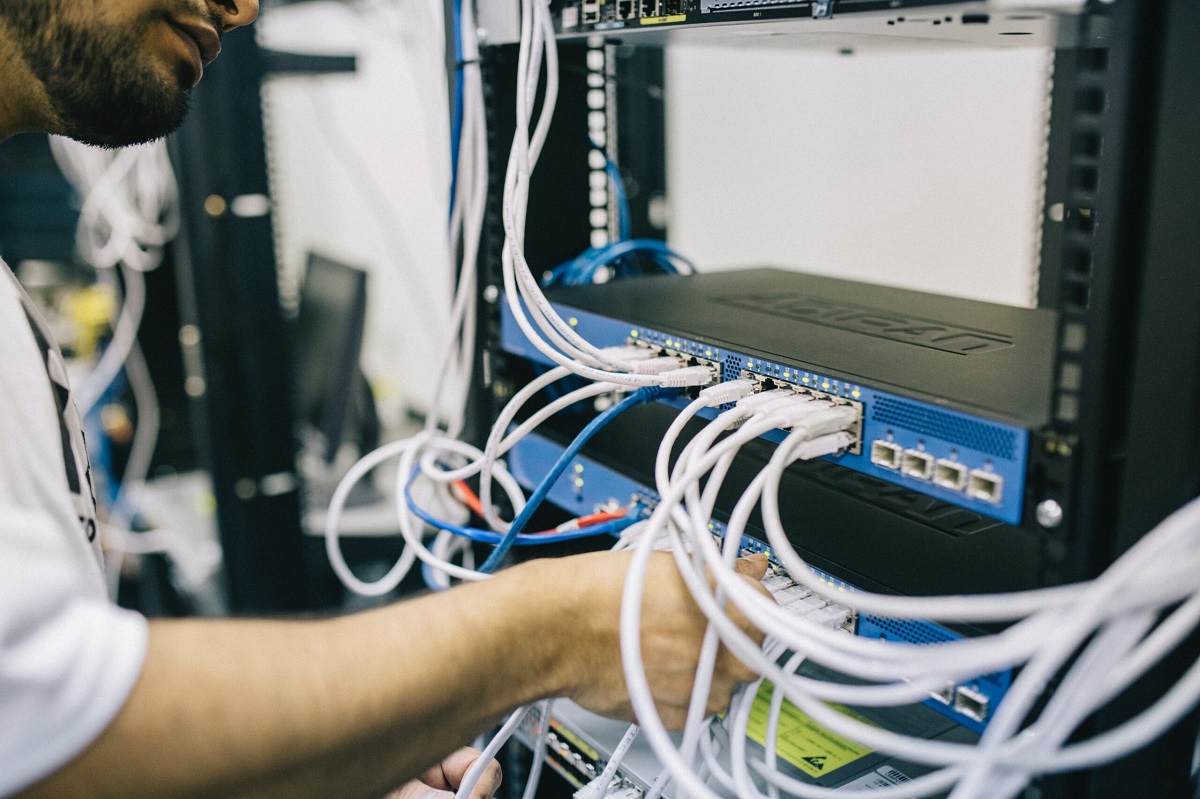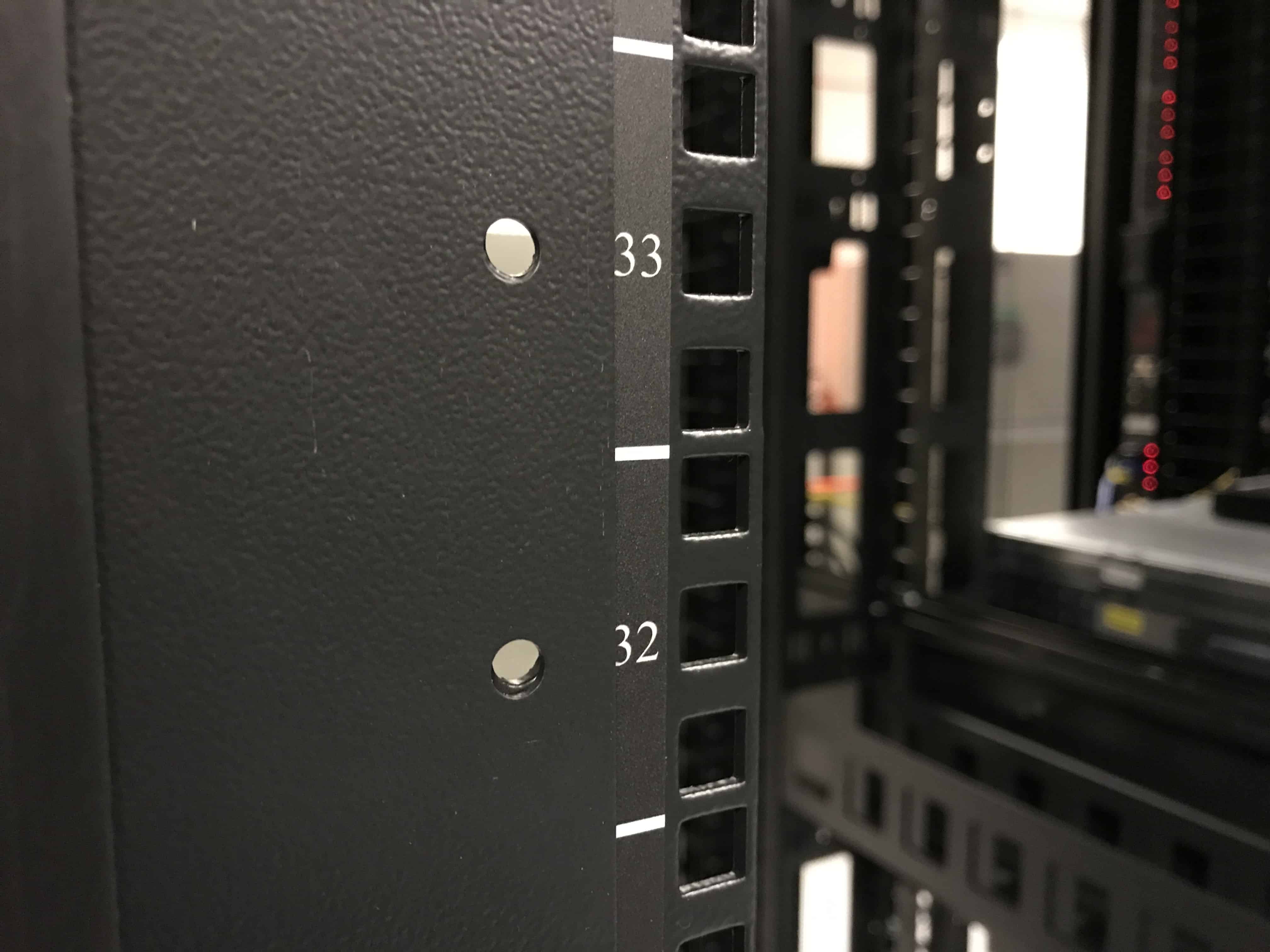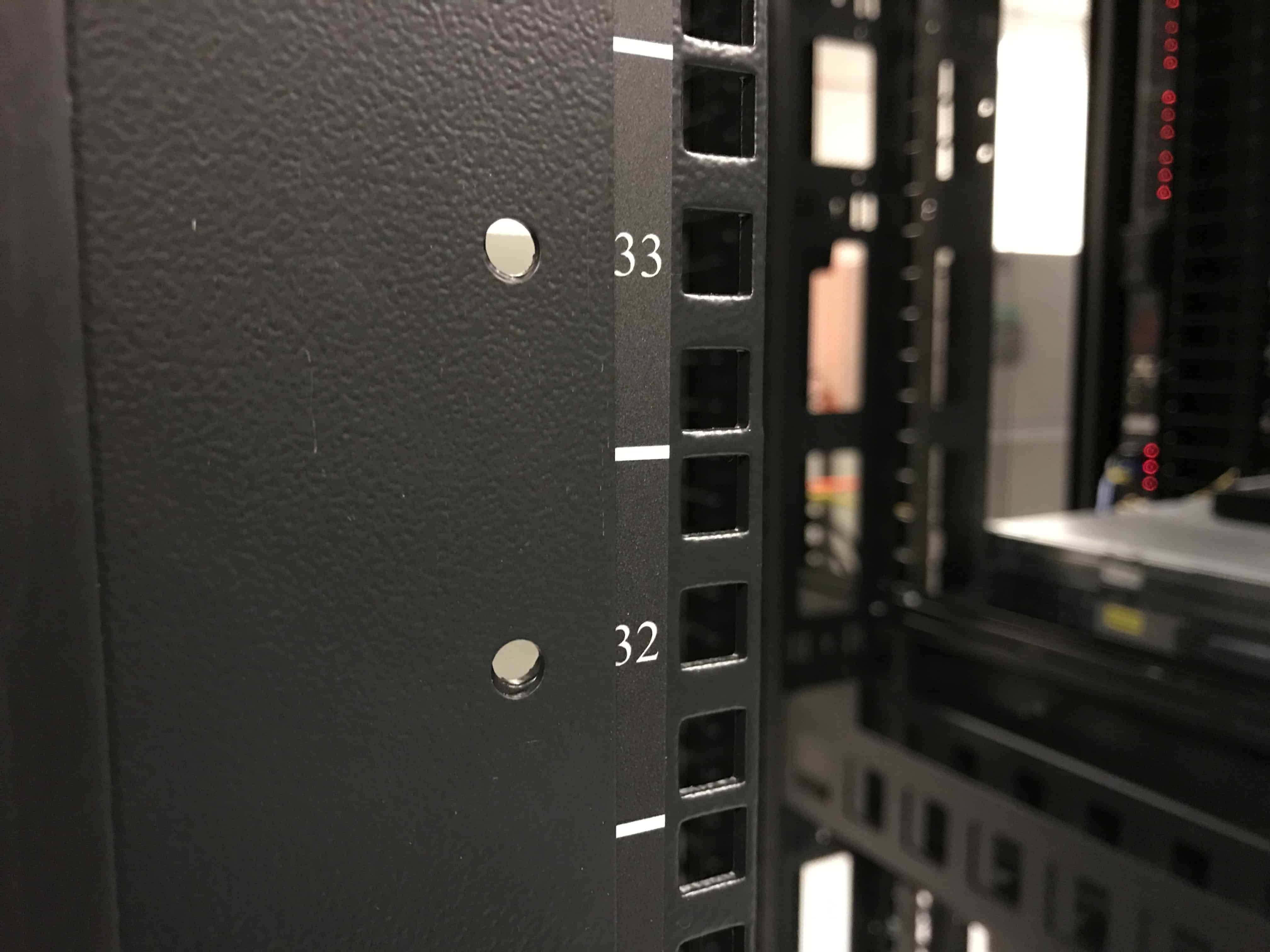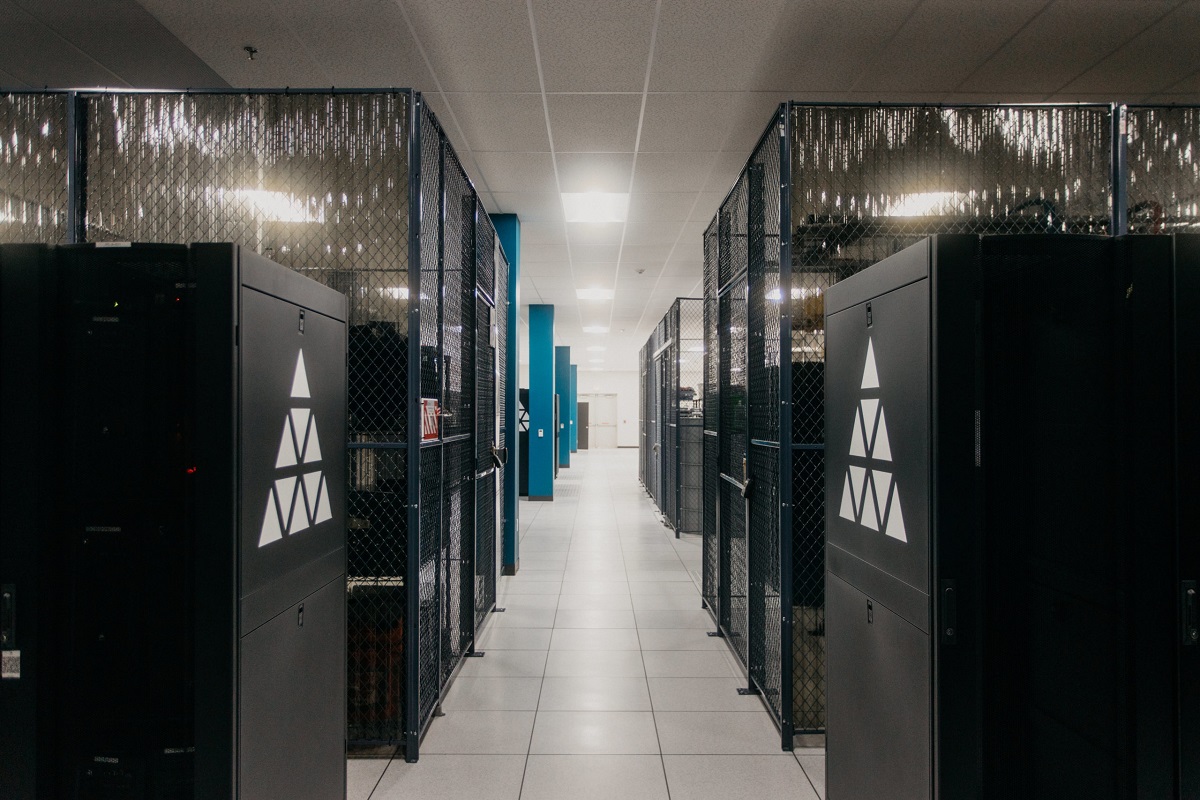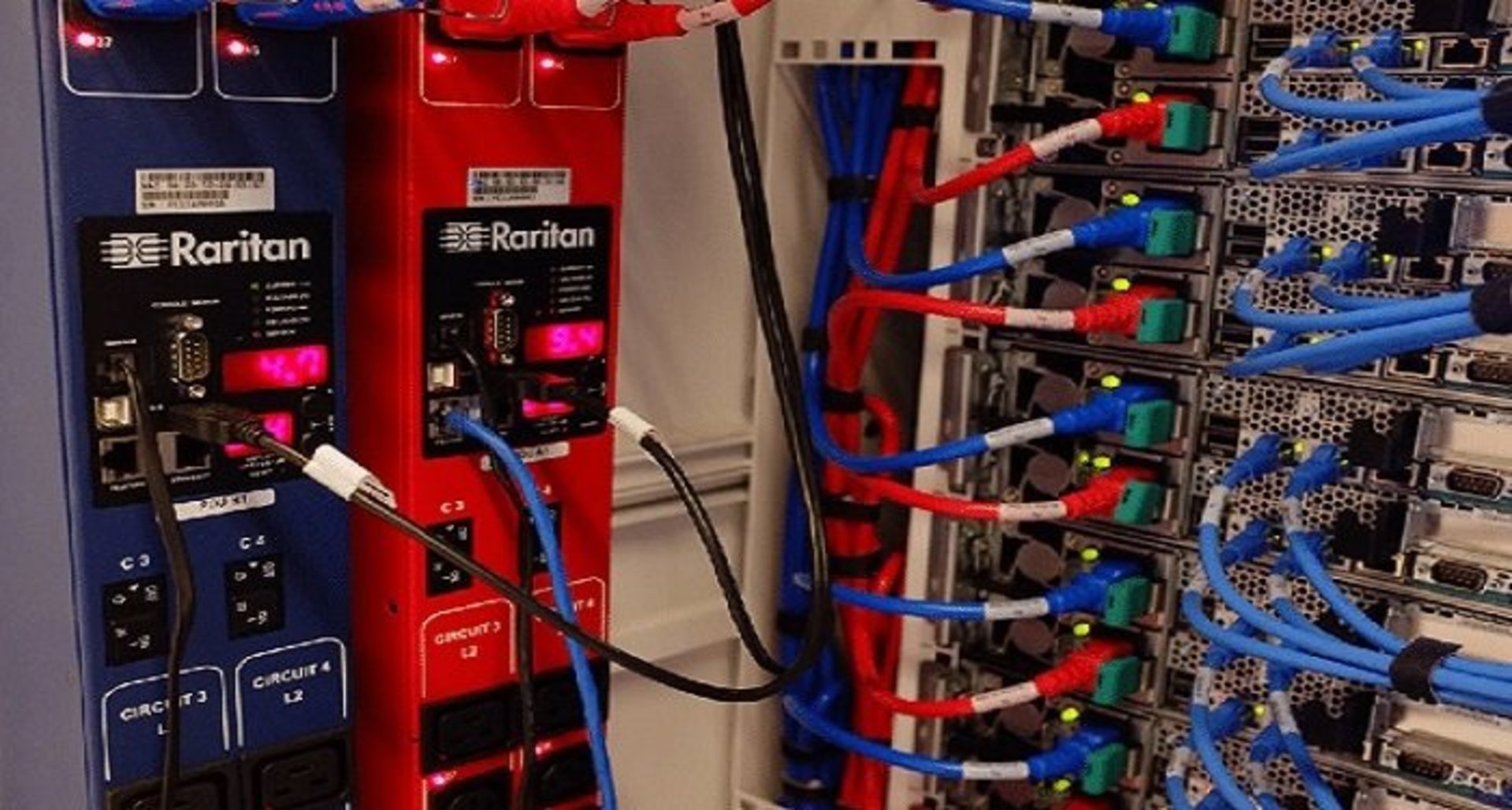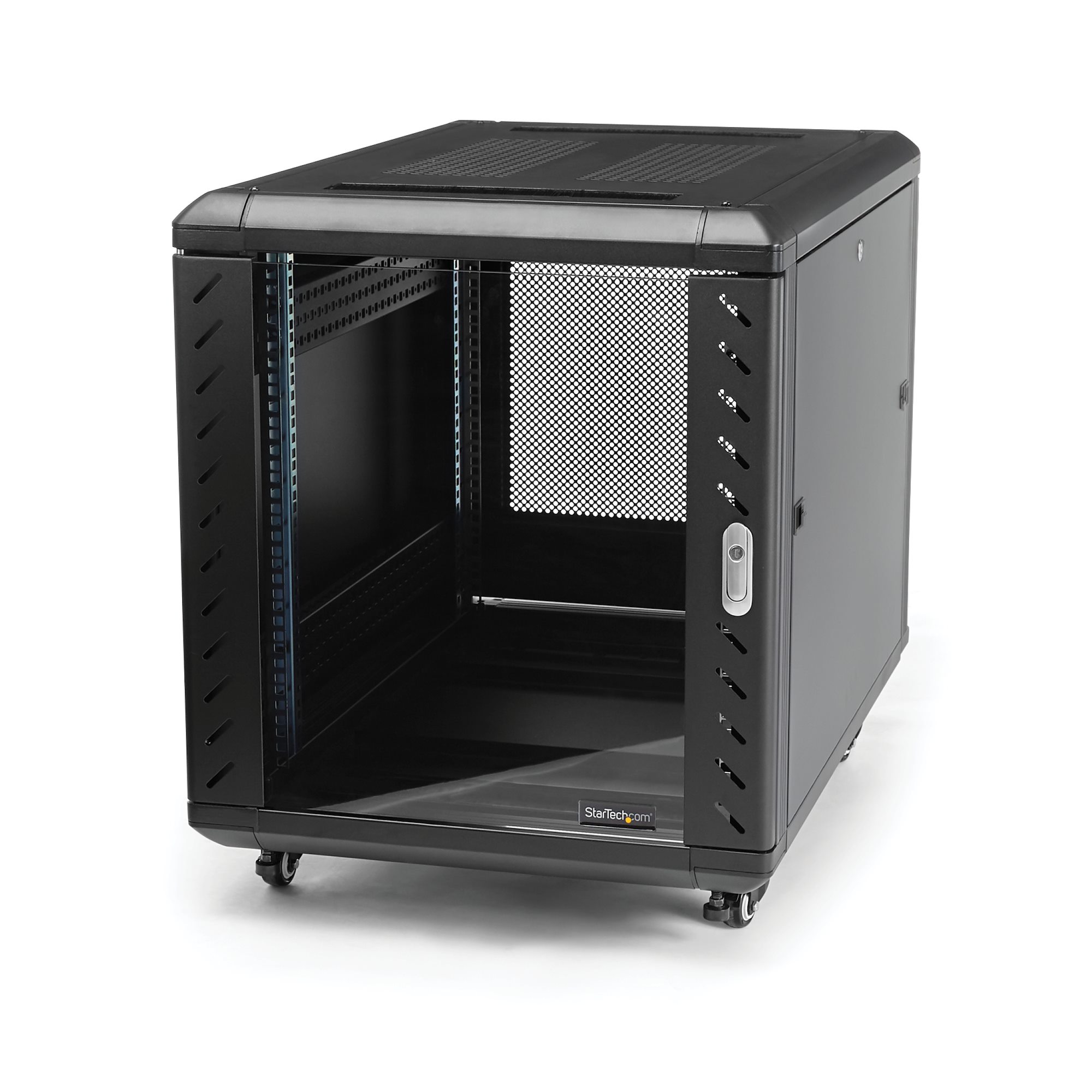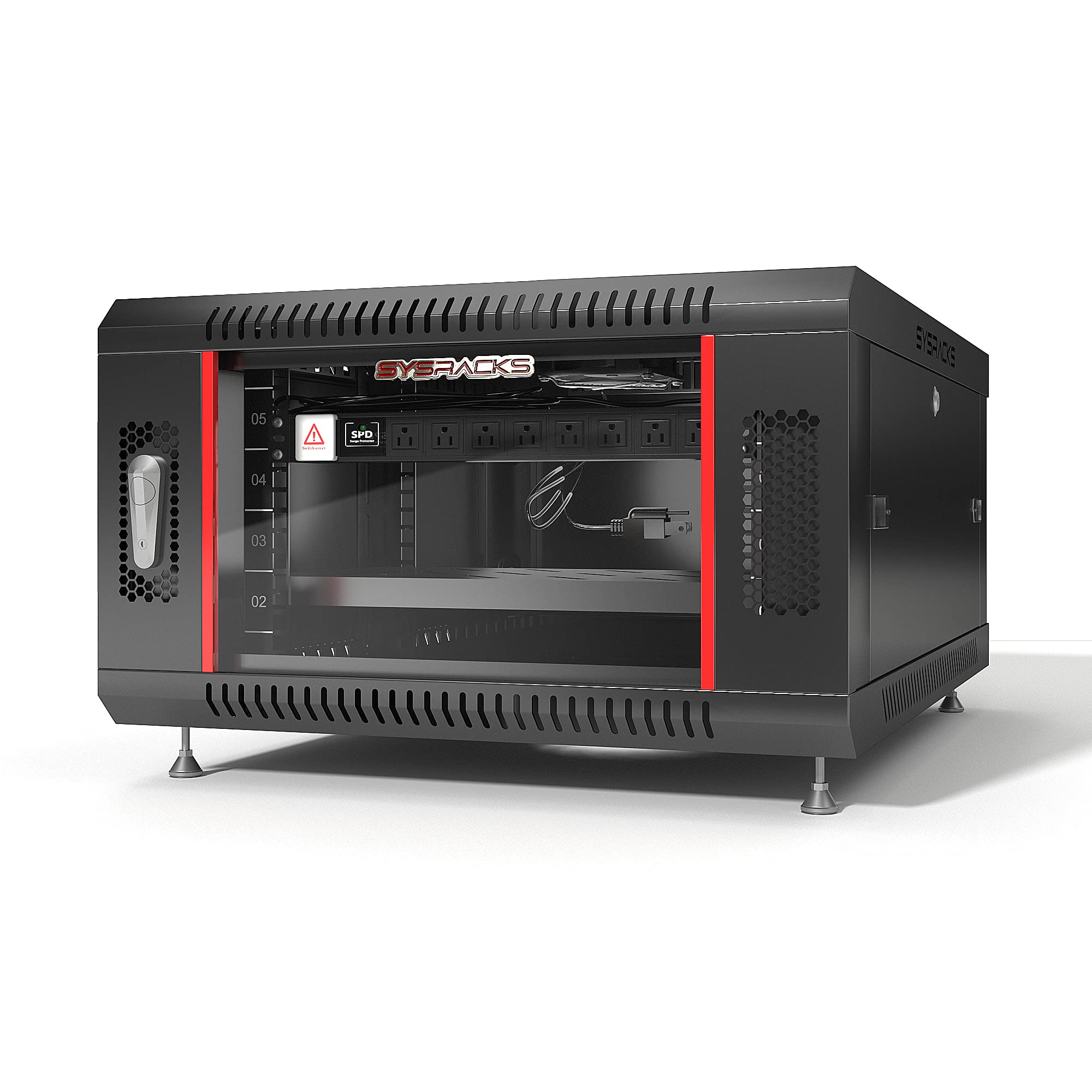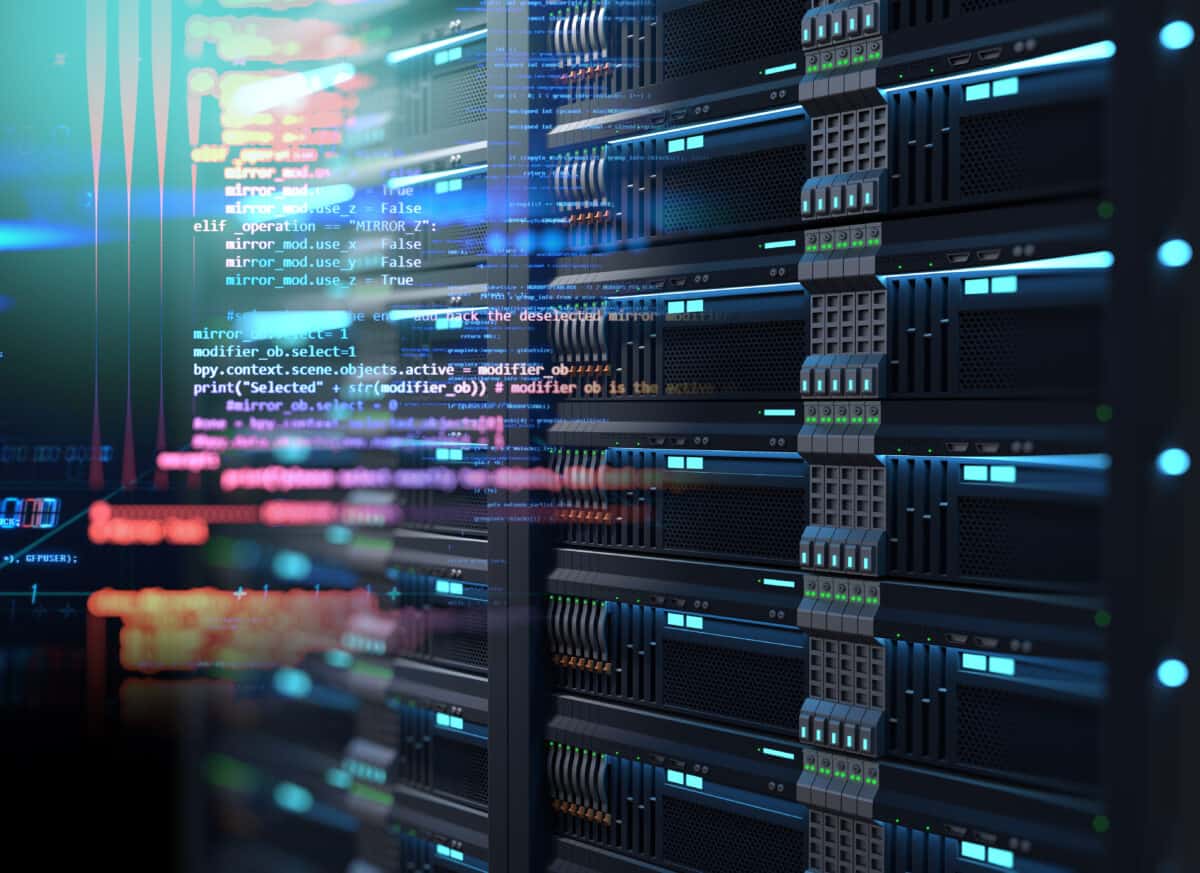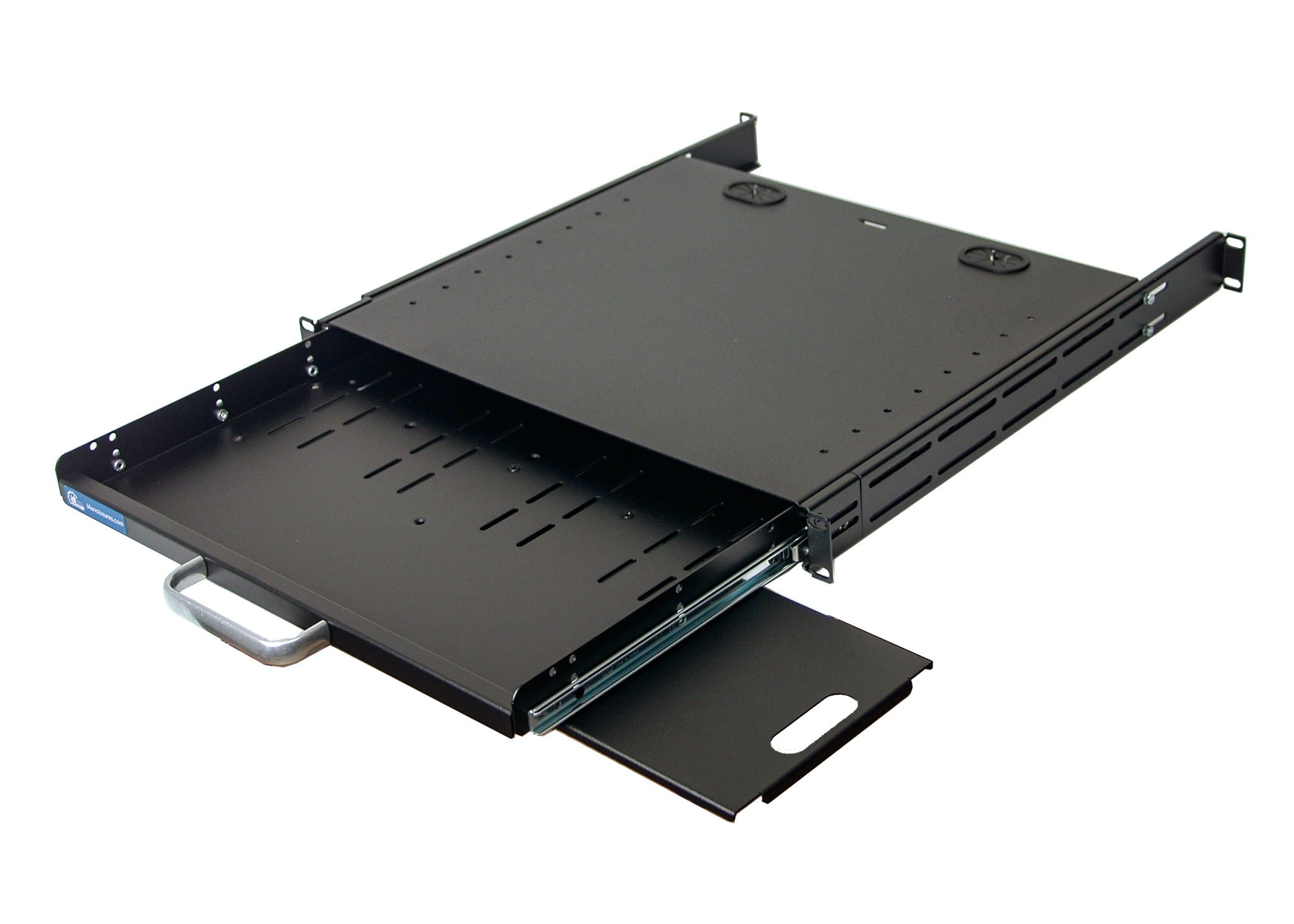Introduction
A server rack is an essential component of any data center or IT infrastructure that houses multiple servers and other networking equipment. It provides the necessary organization, security, and cooling features to ensure the smooth functioning of these critical systems. If you are in the market for a single server rack, it’s important to understand the factors that influence its cost and the various considerations to make before making a purchase.
Finding the right server rack:
When it comes to selecting a server rack, one size does not fit all. There are numerous factors to consider – from the physical characteristics of the rack to the specific requirements of your equipment. Understanding these factors is essential to determine the cost of a single server rack that aligns with your needs.
Factors impacting the cost:
Several factors can influence the cost of a single server rack. These include the physical characteristics of the rack, the materials used in its construction, any additional features or accessories, and even market trends. By considering these factors, you can make an informed decision that balances your budget constraints with your equipment’s requirements.
Physical characteristics of a server rack:
Server racks come in various sizes and configurations. The height, width, and depth of the rack determine its capacity to hold equipment. Additionally, the number and type of rack units (U) it can accommodate affect its cost. A standard server rack typically ranges from 42U to 48U in height, but there are smaller options available for compact setups.
Server rack materials:
The materials used in the construction of a server rack can significantly impact its cost. The most common materials include steel and aluminum. Steel racks offer better sturdiness and durability but are usually more expensive. Aluminum racks are lighter but may not be as robust. The choice depends on your budget and the level of security and longevity you require from the rack.
Add-on features and accessories:
Server racks can come with a variety of additional features and accessories that enhance their functionality and convenience. These can include cable management systems, locking mechanisms, cooling fans, adjustable shelves, and more. While these add-ons provide value, they will also contribute to the overall cost of the rack. Evaluating which features are necessary for your specific requirements will help you optimize your budget.
Average prices for different types of server racks:
The cost of a single server rack can vary depending on its size, materials, and additional features. On average, a standard 42U steel server rack can range from $500 to $1500. Smaller racks or racks with basic features may cost less, while larger racks or racks with advanced functionality can reach higher price points. It’s important to research and compare prices from different suppliers to ensure you are getting the best value for your investment.
Considerations when purchasing:
When purchasing a single server rack, it’s important to assess your current and future requirements. Consider factors such as scalability, power distribution, accessibility, and security. Determine the specific needs of your equipment and evaluate the rack’s compatibility and flexibility to accommodate them. Additionally, take into account logistical aspects such as delivery options, installation, and maintenance services offered by the vendor.
By understanding the factors influencing the cost of a single server rack and considering the specific needs of your infrastructure, you can make an informed decision that ensures efficient equipment organization and optimal performance.
Factors impacting the cost of a single server rack
The cost of a single server rack can vary depending on several factors. Understanding these factors will help you determine the budget required for your specific needs and ensure you make an informed decision. Let’s take a closer look at some of the key factors that can impact the cost of a single server rack:
1. Size and Capacity: The physical characteristics of the server rack, such as its height, width, and depth, play a crucial role in determining its cost. Larger racks with higher capacity will generally be more expensive than smaller ones. The number of rack units (U) it can accommodate is also a vital consideration. Standard server racks are usually 42U or 48U in height, but smaller options are available for limited spaces.
2. Materials: The choice of materials used in the construction of the server rack can significantly impact its cost. Steel and aluminum are the most common materials used. Steel racks offer enhanced durability and sturdiness but can be more expensive. Aluminum racks, on the other hand, are lighter but may not be as robust. Consider your budget and the level of security and longevity required for your equipment.
3. Additional Features and Accessories: Server racks come with various add-on features and accessories that can enhance their functionality and convenience. These may include cable management systems, locking mechanisms, cooling fans, adjustable shelves, and more. While these features provide added value, they will also contribute to the overall cost of the rack. Assess which features are essential for your specific requirements to optimize your budget.
4. Market Trends and Supplier: The cost of server racks can also be influenced by market trends and the supplier you choose. Prices may vary based on supply and demand dynamics and the reputation and quality of the supplier. It’s important to research and compare prices from different suppliers to ensure you are getting the best value for your investment.
5. Customization and Branding: If you require customization or branding of the server rack, this can also impact the cost. Customized racks may involve additional manufacturing processes or materials, which can increase the overall price. Similarly, adding your company’s branding or logo to the rack may come with additional costs. Evaluate whether these options are necessary for your specific requirements and budget accordingly.
By considering these factors, you can estimate the cost of a single server rack that aligns with your needs. It’s crucial to strike a balance between your budget constraints and the requirements of your equipment to ensure you make the right choice. Keep in mind that a server rack is a long-term investment, so it’s essential to carefully evaluate these factors to maximize the value and efficiency of your infrastructure.
Physical characteristics of a server rack and their influence on pricing
The physical characteristics of a server rack are crucial factors that influence its pricing. Understanding these characteristics will help you determine the right rack size and configuration for your equipment and budget. Let’s explore the key physical characteristics of a server rack and their influence on pricing:
1. Height: The height of a server rack is typically measured in rack units (U). The standard height for a server rack is around 42U or 48U, but smaller options are available. Taller racks can accommodate more equipment, making them more expensive than shorter racks. Consider your current and future needs when selecting the appropriate height for your rack.
2. Width: Server racks usually come in standard widths, typically around 19 inches. The width determines the compatibility of the rack with your equipment. Ensure that the width of the rack is suitable for your servers and networking devices. It’s worth noting that wider racks, such as 23 inches, may be available for specific industry requirements or specialized equipment, and these may come with an additional cost.
3. Depth: The depth of a server rack refers to the distance from the front to the back of the rack. It is essential to consider the depth to ensure your equipment fits properly and allows for proper airflow and cable management. Different depths are available, ranging from 600mm to 1200mm and more. Deeper racks are typically more expensive, as they offer more space for accommodating larger and deeper servers.
4. Rack Units (U): The number of rack units (U) a server rack can accommodate is an important consideration. A standard server rack can hold 42U or 48U, but smaller options, such as 12U or 24U, are also available. The more rack units a server rack offers, the higher the cost. Assess your current and future equipment needs to determine the appropriate number of rack units required.
5. Rack Mounting Options: Server racks may offer different rack mounting options, such as front-only or front and rear mounting rails. Front and rear mounting rails provide added stability and flexibility but may come at a higher price. Consider your equipment’s requirements and ensure the rack provides the necessary mounting options for your devices.
6. Weight Capacity: The weight capacity of the server rack is another crucial consideration. It refers to the maximum weight the rack can safely support. Higher weight capacity racks, designed to handle heavier equipment, are generally more expensive. Evaluate the weight of your servers and networking devices to select a rack that can adequately support them.
These physical characteristics directly impact the pricing of a server rack. Larger racks with higher capacities, deeper depths, and additional features will generally come at a higher cost. Carefully evaluate your equipment’s current and future needs to select a server rack that provides the necessary physical characteristics while staying within your allocated budget.
Server rack materials and their cost implications
The choice of materials used in the construction of a server rack can significantly impact its cost. Understanding the different materials and their characteristics will help you make an informed decision and stay within your budget. Let’s explore the common server rack materials and their cost implications:
1. Steel: Steel is a popular material used in server rack construction due to its durability and strength. Steel racks offer excellent stability and can handle heavier loads. They are less prone to bending or warping, making them a reliable choice for long-term use. However, steel racks are generally more expensive than racks made from other materials due to the higher cost of the raw material and the manufacturing processes involved.
2. Aluminum: Aluminum racks are a lighter and more affordable alternative to steel. They are easier to handle and transport, making them ideal for environments where frequent mobility or installations are required. Aluminum racks offer sufficient strength for most equipment but may not be as robust or resistant to heavy loads as steel racks. They are a cost-effective option, especially for smaller setups or where weight is a significant consideration.
3. Hybrid and Composite Materials: Some server racks utilize a combination of materials or composite materials to achieve a balance of strength, weight, and cost-effectiveness. For example, racks may feature steel frames with aluminum panels or incorporate other heavy-duty plastics or composites. These hybrid or composite materials can offer a cost-effective solution while maintaining durability and functionality.
4. Coating and Finishes: The coating or finish applied to the server rack can also impact its cost. Powder coating is a popular choice as it provides increased durability, corrosion resistance, and an attractive appearance. However, powder-coated racks may be more expensive than racks with basic finishes. Consider your specific requirements for aesthetics and durability when evaluating coating options.
5. Specialized Materials: In certain cases, specialized materials may be used for specific requirements. For example, racks used in extreme environments, such as high humidity or corrosive atmospheres, may feature stainless steel construction for added resistance. These specialized materials typically come at a higher cost due to their unique properties and manufacturing processes involved.
When selecting a server rack, consider your budget, durability requirements, and environmental factors. Steel racks offer superior durability but may be more expensive, especially for larger sizes. Aluminum racks provide a lightweight and cost-effective option but may not be as sturdy. Hybrid or composite materials can strike a balance between strength and cost. Assess your specific needs and consult with suppliers to determine the best server rack material for your budget and requirements.
Additional features and accessories that can affect the price of a server rack
Server racks can come with a variety of additional features and accessories that enhance their functionality, convenience, and security. While these features provide added value, they can also impact the overall cost of the rack. Understanding the available options and their implications will help you choose the right server rack that meets your specific needs and budget. Let’s explore some of the additional features and accessories that can affect the price of a server rack:
1. Cable Management Systems: Effective cable management is essential for maintaining a neat and organized network infrastructure. Some server racks offer built-in cable management systems, such as cable trays, vertical cable managers, and cable routing features. These systems help minimize cable clutter, improve airflow, and simplify maintenance tasks. Server racks with comprehensive cable management capabilities may come at a higher price due to the additional materials and engineering involved.
2. Locking Mechanisms: Security is a vital consideration for any server room or data center. Server racks may come with various locking mechanisms, such as front and/or rear doors with key locks or combination locks. These locks help prevent unauthorized access and protect your valuable equipment. Racks with robust locking mechanisms and enhanced security features may have a higher price tag compared to racks with basic or no locking options.
3. Cooling and Ventilation: Proper cooling and ventilation are essential for maintaining optimal operating temperatures for servers and other equipment. Some server racks offer integrated cooling systems, such as fans or cooling vents, that help dissipate heat and improve airflow. Racks with advanced cooling features and efficient airflow management may be priced higher due to the additional components and engineering required to ensure effective temperature regulation.
4. Adjustable Shelves and Mounting Rails: Flexibility and adaptability are important considerations when selecting a server rack. Racks with adjustable shelves and mounting rails offer more versatility in accommodating different equipment sizes and configurations. These racks provide the ability to easily reconfigure the rack layout as your needs evolve over time. Server racks with adjustable features may command a higher price due to their increased functionality and customization options.
5. Power Management Options: Some server racks offer integrated power distribution units (PDUs) and surge protection features. These power management options help streamline power distribution, provide surge protection, and allow for remote monitoring and control. Server racks with advanced power management capabilities may have a higher price due to the added electrical components and technology involved.
6. Accessory Compatibility: Server racks often have compatibility with a wide range of accessories, such as monitor consoles, keyboard trays, and sliding shelves. These accessories can enhance the convenience and usability of the rack, but they may come at an additional cost. Consider the specific accessories compatible with the server rack and their individual pricing to assess their value for your requirements.
When considering the additional features and accessories of a server rack, it is important to evaluate their necessity based on your specific needs and budget. Assess the impact of these features on the overall functionality, security, and convenience of your server infrastructure, and determine whether the additional cost is justified. Striking the right balance between functionality and cost will help you select a server rack that optimizes your investment and supports your IT infrastructure effectively.
Average prices for different types of server racks
The cost of a server rack can vary based on its size, materials, and additional features. Having an understanding of the average prices for different types of server racks will help you budget and make an informed decision. Here is a breakdown of the average prices for various server rack options:
1. Standard Steel Server Rack: A standard 42U steel server rack is one of the most common options used in data centers and IT environments. On average, a standard 42U steel server rack can range from $500 to $1500. The price may vary based on the manufacturer, the quality of the steel used, and any additional features included.
2. Compact Server Rack: Compact server racks, which are smaller in size and designed for limited space environments, are generally more affordable than standard-sized racks. A compact server rack with around 12U to 24U capacity may range from $300 to $800 in price.
3. Open Frame Server Rack: Open frame server racks provide a cost-effective solution for organizations looking for basic equipment organization and easy access. These racks, which typically lack doors and side panels, are often used for network switches or audio/video equipment. The average price for an open frame server rack ranges from $100 to $500, depending on size and materials used.
4. Wall-Mounted Server Rack: Wall-mounted server racks are designed to save space by being mounted directly on walls. They are commonly used in small offices or areas with limited floor space. The average price for a wall-mounted server rack can range from $100 to $400, depending on size, materials, and additional features.
5. Specialty Server Rack: Specialty server racks, such as those designed for specific industries or unique requirements, may come at a higher price due to their specialized features. For example, seismic server racks designed to withstand earthquakes or environmentally-controlled racks may cost significantly more, ranging from $2000 to $5000 or more based on the specific requirements and customization needed.
It’s important to note that these price ranges are intended to provide a general idea of the average costs for different types of server racks. The actual prices can vary based on various factors like the brand, supplier, specific features included, and any customization. Researching different suppliers and comparing prices will help you find the best value for your investment based on your specific needs and budget.
Considerations when purchasing a server rack
When purchasing a server rack, several important considerations should be taken into account to ensure you select the right rack for your specific needs. By evaluating these factors, you can make an informed decision that effectively supports your IT infrastructure. Here are some key considerations to keep in mind when purchasing a server rack:
1. Equipment Requirements: Assess the specific requirements of your servers and networking equipment. Consider factors like size, weight, and form factor to ensure the server rack can accommodate and support your equipment properly. Take into account any future expansion plans to ensure the rack has sufficient capacity for growth.
2. Space Availability: Measure the available space in your server room or data center. Consider the height, width, and depth of the rack to ensure it fits comfortably within the allocated space. Account for proper ventilation and allow enough clearance for maintenance and cable management.
3. Cooling and Airflow: Evaluate the cooling requirements of your equipment and ensure the server rack provides adequate airflow. Look for features like cooling fans or adjustable vents to facilitate proper ventilation. Effective cooling is essential to prevent equipment overheating and maintain optimal performance.
4. Cable Management: Consider the cable management options provided by the server rack. Look for features like cable tray systems, cable management rings, or built-in cable management channels to keep your cables organized and facilitate easy maintenance and troubleshooting. Proper cable management improves airflow and minimizes the risk of cable damage or accidental disconnections.
5. Security: Security is a vital consideration to protect your valuable equipment. Look for server racks with robust locking mechanisms, both on the front and rear doors, to prevent unauthorized access. Additional security features like biometric access control or tamper-proof designs may also be worth considering based on your specific requirements.
6. Scalability and Flexibility: Consider the scalability and flexibility of the server rack. Opt for a rack that can accommodate your current equipment as well as future expansion. Look for features like adjustable mounting rails or modular designs that allow for easy reconfiguration and customization as your needs evolve.
7. Supplier Reputation and Support: Research and choose a reputable supplier with a track record of quality products and reliable customer support. Read customer reviews and testimonials to ensure that the supplier delivers on their promises and provides excellent after-sales support, including warranty coverage and assistance with installation and maintenance.
8. Budget: Consider your budget constraints when selecting a server rack. Determine the features and specifications that are essential for your requirements and prioritize accordingly. Look for the best value within your budget range while considering long-term durability and functionality.
By carefully considering these factors, you can select a server rack that meets your specific needs, supports your equipment effectively, and optimizes the efficiency and organization of your IT infrastructure. Take the time to research and compare different options to ensure you make the best investment for your organization.
Conclusion
When purchasing a server rack, it is crucial to consider various factors that impact its cost, functionality, and suitability for your specific requirements. The physical characteristics of the rack, such as size, materials, and rack units, play a significant role in determining its price. The choice of materials, such as steel or aluminum, affects the rack’s durability and cost. Additional features and accessories, including cable management systems, locking mechanisms, cooling options, and power management, can enhance the rack’s functionality but also influence its price.
Understanding the average prices for different types of server racks can help you budget accordingly. Compact racks, open frame racks, wall-mounted racks, and specialty racks may have different price ranges based on their unique features and specifications. It is essential to assess your equipment requirements, available space, cooling needs, and security concerns when selecting a server rack. Scalability, flexibility, and the reputation of the supplier should also be taken into consideration.
By carefully considering these factors, you can make an informed decision and choose a server rack that meets your needs while staying within your budget. Remember that a server rack is a long-term investment, so it is crucial to select one that can accommodate your current equipment and provide room for future expansion.
Take the time to research different suppliers, compare prices, and read customer reviews to ensure you are choosing a reliable supplier with excellent customer support. Evaluating these considerations will help you optimize the efficiency, organization, and security of your IT infrastructure while getting the best value for your investment.







